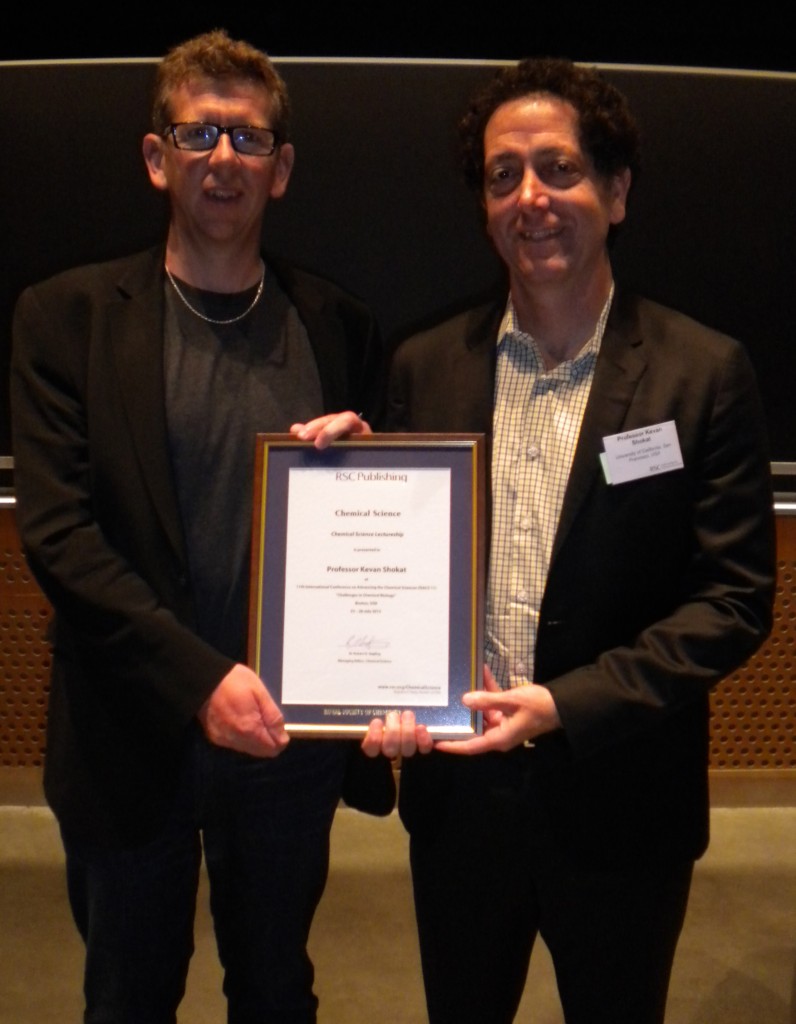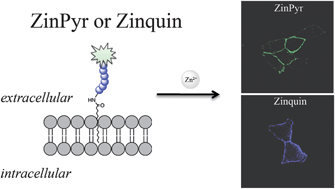We are delighted to announce the winner of the inaugural Chemical Science Lectureship – Professor Kevan Shokat.
The 2013 Chemical Science Lectureship was awarded in the area of chemical biology and the award lecture was given at Challenges in Chemical Biology (ISACS11) in Boston, USA, in July. Professor Shokat was presented with his award by Chemical Science Associate Editor, Professor Tom Muir.
Professor Shokat obtained his Ph.D. at UC Berkeley and following appointments at Stanford University and Princeton University, in 1999 he moved to UC San Francisco to his current appointment as Associate Professor of Cellular and Molecular Pharmacology.
The Shokat Lab’s research is focused on using the tools of synthetic organic chemistry, structural biology, genetics, and mathematical modelling to gain insight into how signalling networks transmit information in normal and disease settings. Their guiding principle is to use chemistry to answer questions that cannot be addressed by the use of biochemistry or genetics— they seek to provide tools, which fill in the gaps left behind by more traditional approaches.
Award Details
The lectureship, which will be awarded annually, will recognize sustained excellence in research by a mid-career scientist within the chemical sciences. The recipient of the Lectureship is selected and endorsed by the Chemical Science Editorial Board.
The recipient will be invited to present a plenary lecture at a relevant International Symposia on Advancing the Chemical Sciences (ISACS); they will also receive a certificate, $2000 and will be invited to contribute to Chemical Science.
The 2014 Chemical Science Lectureship winner will give a plenary lecture at one of the 2014 ISACS meetings:
- ISACS 13: Challenges in Inorganic Chemistry and Materials Chemistry – July 2014, Dublin, Ireland
- ISACS 14: Challenges in Organic Chemistry (Synthesis) – August 2014, Shanghai, China
- ISACS 15: Challenges in Nanoscience – August 2014, San Diego, USA
More information about these conferences will appear on the ISACS website soon.
















